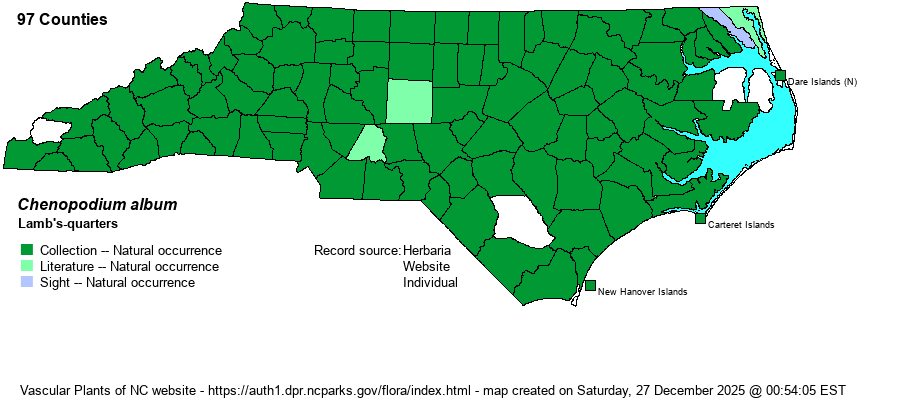| taxonName | relationship | relatedTaxonName | relatedTaxonRefText | relComments |
|---|
|
|
|
|
| Chenopodium album | < | Chenopodium album | Radford, Ahles, and Bell (1968) | (also including C. berlandieri and all varieties) |
| Chenopodium album | > | Chenopodium album var. album | Kartesz (1999) | |
| Chenopodium album | > | Chenopodium album var. album | | |
| Chenopodium album | > | Chenopodium album var. missouriense | Kartesz (1999) | |
| Chenopodium album | > | Chenopodium album var. missouriense | | |
| Chenopodium album | > | Chenopodium album | Gleason and Cronquist (1991) | |
| Chenopodium album | > | Chenopodium album | | |
| Chenopodium album | > | Chenopodium album | | |
| Chenopodium album | < | Chenopodium album | Gleason (1952) | |
| Chenopodium album | > | Chenopodium missouriense | Gleason and Cronquist (1991) | |
| Chenopodium album | > | Chenopodium missouriense | | |
| Chenopodium album | > | Chenopodium missouriense | | |
| Chenopodium album | > | Chenopodium missouriense | Kühn in Kubitzki, Rohwer, & Bittrich (1993). Draft key based closely on Clemants & Mosyakin in FNA (2003b). [also see Dysphania< | |
| Chenopodium album | > | Chenopodium paganum | Fernald (1950) | , misapplied |
| Chenopodium album | > | Chenopodium paganum | Small (1933, 1938) | , misapplied |
| Chenopodium album | < | Chenopodium album | Flora of North America (1993b, 1997, 2000, 2002a, 2002b, 2003a, 2004b, 2005, 2006a, 2006b, 2006c, 2007a, 2009, 2010) | |
| Chenopodium album | < | Chenopodium album | Gleason (1952) | |
| Chenopodium album | > | Chenopodium album var. album | Kühn in Kubitzki, Rohwer, & Bittrich (1993). Draft key based closely on Clemants & Mosyakin in FNA (2003b). [also see Dysphania< | |
| Chenopodium album | > | Chenopodium album var. lanceolatum | Kühn in Kubitzki, Rohwer, & Bittrich (1993). Draft key based closely on Clemants & Mosyakin in FNA (2003b). [also see Dysphania< | |
| Chenopodium album | > | Chenopodium giganteum | Kühn in Kubitzki, Rohwer, & Bittrich (1993). Draft key based closely on Clemants & Mosyakin in FNA (2003b). [also see Dysphania< | |
| Chenopodium album | > | Chenopodium lanceolatum | | |
| Source: Weakley's Flora |

